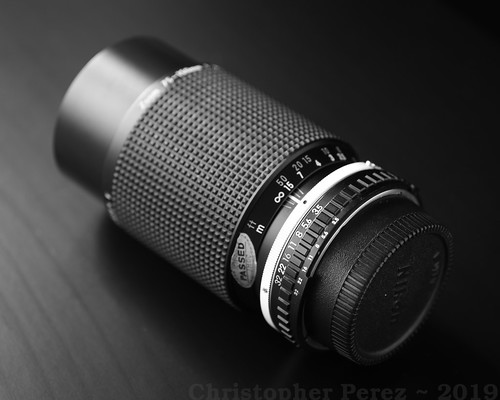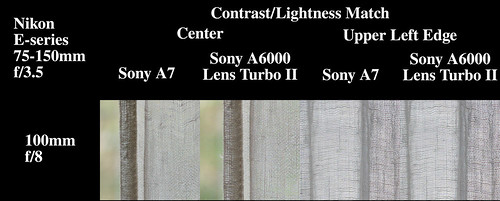Earlier I said something that likely needs a little proof.
"...Though the A6000 images show less contrast and appear "softer" than the A7 center images, the Nikon Nikkor 24mm f/2.8 Ai looks reasonably sharp in the center wide open and at f/8. When contrast is matched with the A7, the A6000 24mm images look fairly comparable..."
This is a quote from my post that looked at field flatness (or the distinct lack thereof) of a Sony A6000+Lens Turbo II+Nikon Nikkor 24mm f/2.8 Ai setup.
When I wrote that comment I knew I'd have to come back to it in the future. Well, the future is now.
Image processing can be as important to how "sharp" a photograph appears as just about anything else we consider. This includes "lens resolution", which is really, for most of us, system resolution where sensor size, lighting, subject all influence the result. Rarely are we able to consider a standalone optics true resolution, unless you're Roger Cicala at Lens Rentals.
Using a set of images I'd taken with a beautiful Nikon 75-150mm f/3.5 E-series lens I illustrate by showing my homework my reasoning behind the above quote.
In the following image I "matched" the look of an APS-C sensor'd Sony A6000 + Lens Turbo II + Nikon E image to a Sony A7 Full Frame image I took moments before using the same focal length and aperture.
I did nothing to the Sony A7 image other than let Rawtherapee's Auto-Matched Tone Curve set the image levels.
For the Sony A6000/LT2/Nikon image I went back into Rawtherapee, opened the A7 image in a photo viewer, and went between the two applications until the A6000/LT2/Nikon image looked the same as the A7.
In Rawtherapee what I needed to do to get the images to match was to set the Auto-Matched Tone Curve'd APS-C A6000 image to +25 Contrast and +3 Lightness.
The histograms are very nearly identical in the following comparison.
Showing my homework -


No comments:
Post a Comment